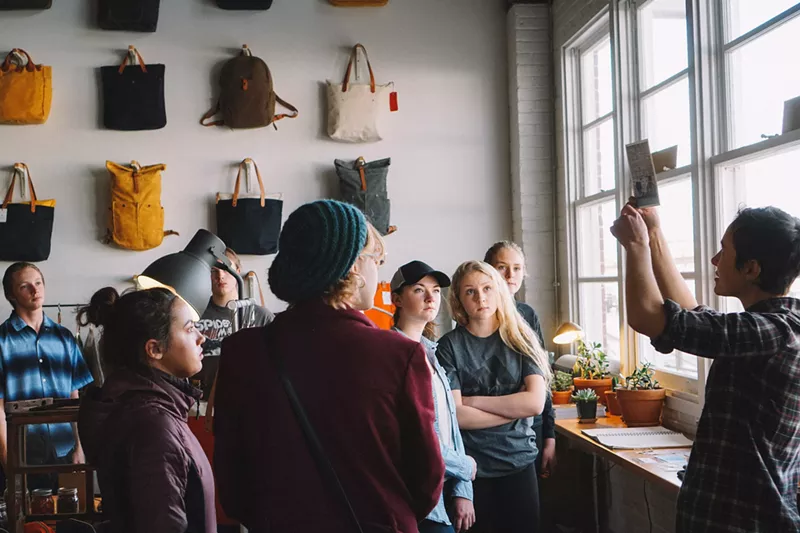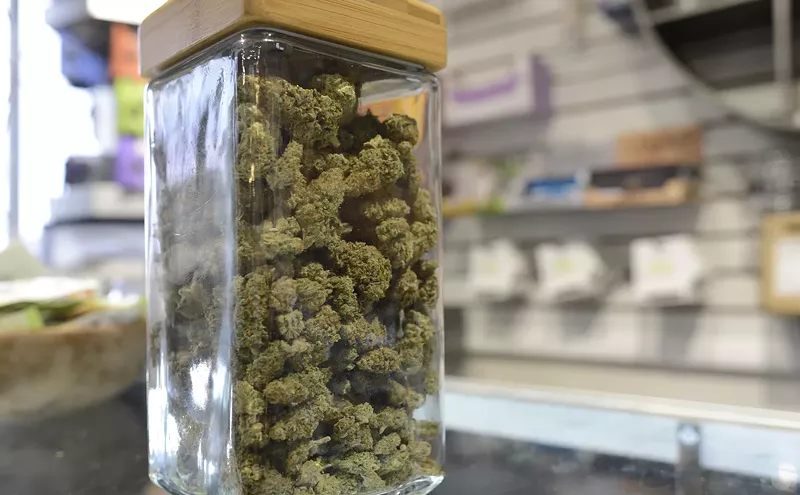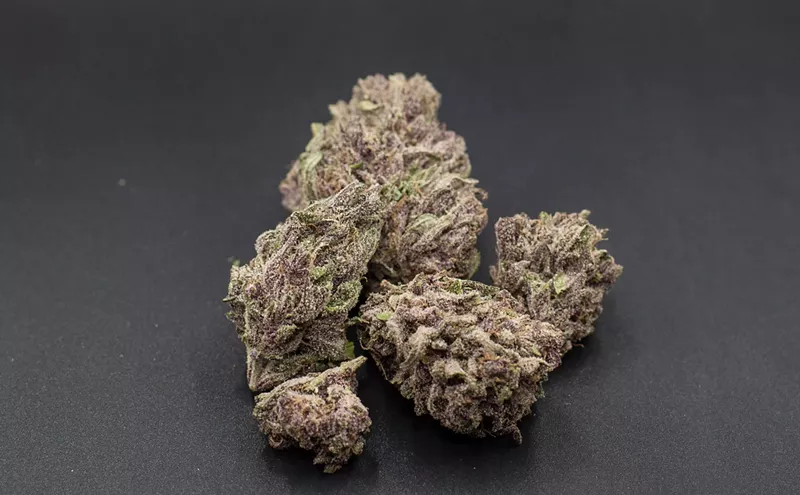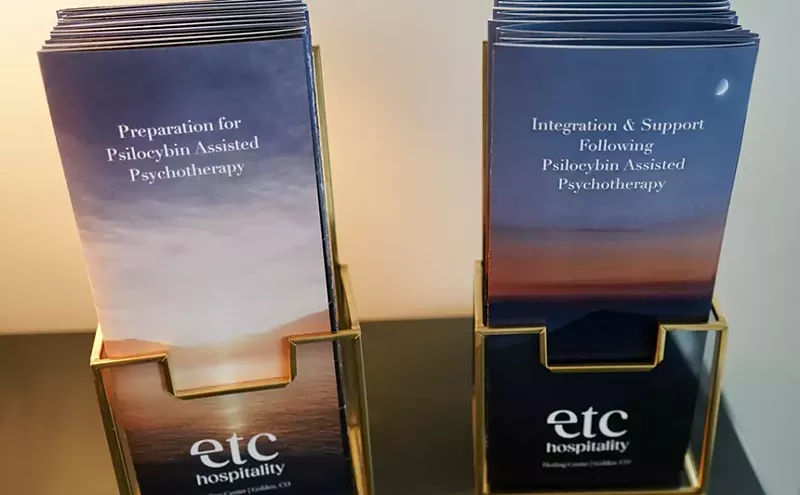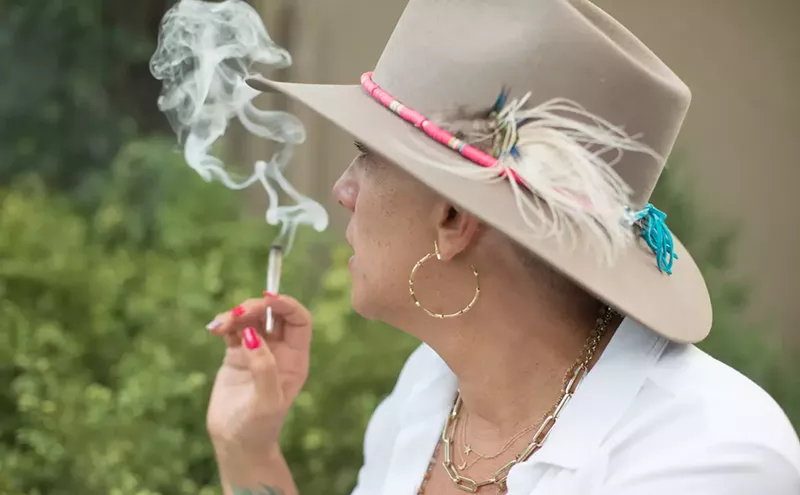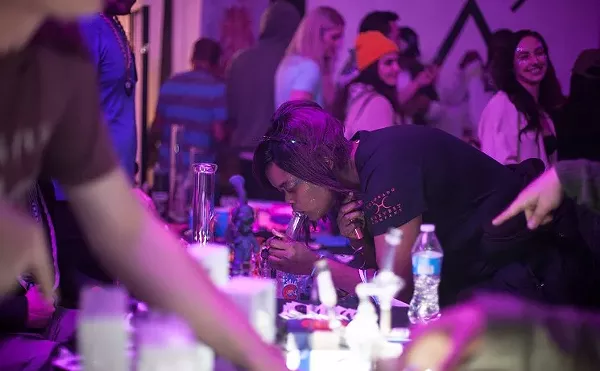The Colorado Department of Public Health and Environment''s Protect What's Next campaign is a more subtle youth marijuana prevention program compared to previous campaigns, according to CDPHE marijuana communication specialist Tara Dunn. The adventures allow "kids to have access to people who are doing just really interesting, kind of different careers," Dunn says. The goal is to get them thinking about their future...and show that using marijuana can get in the way of those goals.
"Protecting [adolescents'] future is an idea worth spreading," and is in line with the organization's mission to share big ideas, says TEDxMileHigh Chief Operating Officer Nicole Dill.
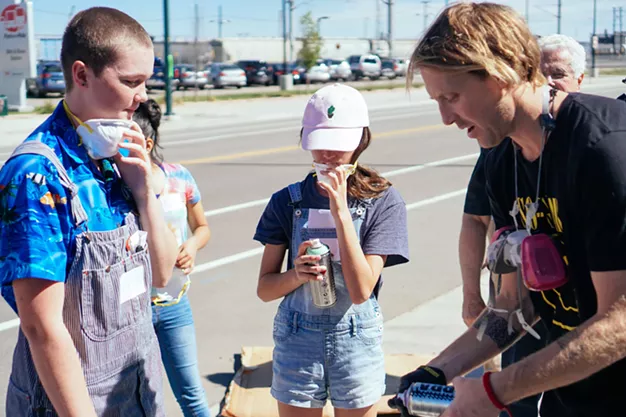
Muralist Pat Milbery at a Protect What's Next adventure.
Cate Croft
"We have come to realize that it's important to get youth perspective," Dunn says. So the CDPHE assembled focus groups to vet different approaches before deciding on the Protect What's Next campaign. To design the immersive activities, Cate Croft, TEDxMileHigh's Adventures and Design director, reached out to community members and past TEDx speakers to host groups of up to twenty students who had signed up through a lottery system.
The adventures weren't the stereotypical "sober fun" activities a college-dorm supervisor might plan; outings included paddle-boarding on Nottingham Lake, a twelve-hour film festival and mural creation in RiNo.
The campaign wasn't about discouraging responsible adult consumption, so organizers didn't ask that hosts never partake – but they couldn't be involved in pushing any marijuana-related legislation. TEDxMileHigh also did a "thorough scrub of social-media accounts to make sure [the host's] online persona matched the message the kids would receive," Croft says, explaining that her team wanted the message to be sincere, not "old-school finger wagging."
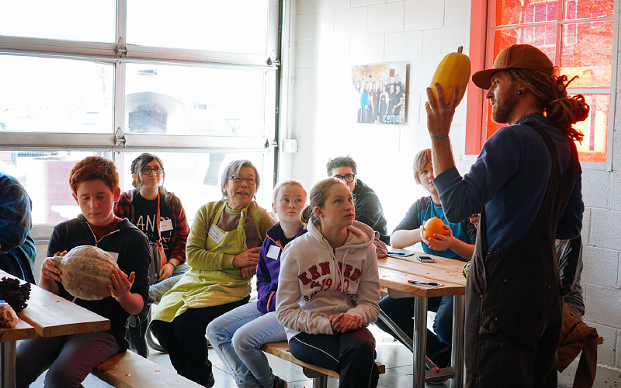
A chef talks with kids as part of a cooking workshop that saw them canning vegetables and creating homemade pizza.
Cate Croft
This year's Protect What's Next campaign had a price tag of approximately $1 million, all coming from marijuana tax revenue. It's part of CDPHE's two-pronged youth education plan, which includes encouraging adults to have candid conversations about pot with children.
The 2015 Healthy Kids Colorado Survey found a plateauing rate of youth marijuana intake for the past ten years. The high school current use rate is 21.2 percent, slightly under the national average. However, the proportion of youth who considered marijuana use "risky" decreased from 54 percent in 2013 to 48 percent in 2015.
Now that the Protect What's Next Adventures are winding to a close, the CDPHE has selected Amélie Company, the group responsible for the Drive High, Get a DUI campaign in 2014, to spearhead the next iteration of the youth marijuana prevention effort. The advertising agency will also collaborate with the state to educate Coloradans about state laws and health effects of marijuana use. More details about the campaign will be announced in the near future.

